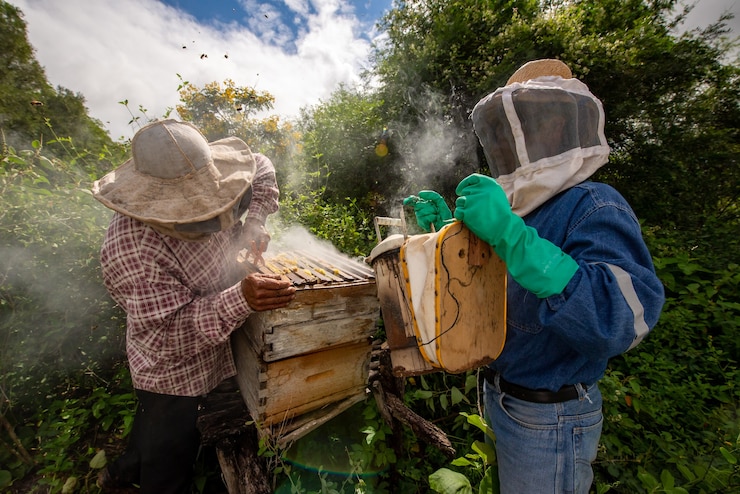Promoting pollinator health and conservation on farms is crucial for maintaining healthy ecosystems and ensuring sustainable food production. Pollinators, such as bees, butterflies, birds, and bats, play a vital role in pollinating crops and wild plants, contributing to the reproduction and diversity of plant species. Here are some key strategies to promote pollinator health and conservation on farms:
- Plant Pollinator-Friendly Habitat: Create and maintain pollinator-friendly habitats on and around the farm. This can include planting native wildflowers, shrubs, and trees that provide nectar and pollen resources throughout the growing season. Choose a variety of flowering plants to support different pollinator species.
- Minimize Pesticide Use: Reduce the use of pesticides, especially during the peak flowering periods when pollinators are most active. Adopt integrated pest management (IPM) practices to minimize pest damage while minimizing harm to pollinators. Use targeted and selective pesticide applications when necessary, and follow label instructions carefully.
- Provide Water Sources: Ensure that pollinators have access to clean water sources on the farm. This can be achieved through the installation of shallow birdbaths, small ponds, or by creating moist areas with pebbles or sand where insects can drink.
- Preserve Natural Areas: Preserve and protect natural areas, such as hedgerows, woodlands, and wetlands, within and around the farm. These areas serve as important habitats for pollinators and support biodiversity. Avoid clearing these areas unnecessarily and consider restoring or creating new natural habitats if feasible.
- Diversify Crop Rotation and Cover Crops: Implement diverse crop rotation and cover cropping practices. This helps provide a variety of flowering plants throughout the year, offering continuous food sources for pollinators. Avoid long periods of bare soil by planting cover crops, which also help improve soil health and prevent erosion.
- Raise Awareness and Educate: Educate farm workers, local communities, and consumers about the importance of pollinators and their role in agriculture. Highlight the actions being taken on the farm to promote pollinator health and conservation. Encourage others to create pollinator-friendly spaces in their own gardens or communities.
- Collaborate with Researchers and Conservation Organizations: Collaborate with researchers, universities, and conservation organizations to stay updated on the latest scientific findings, best practices, and initiatives related to pollinator health. Participate in relevant research projects or conservation programs to contribute to the broader understanding of pollinators and their conservation.
- Monitor and Evaluate: Regularly monitor and evaluate the impact of pollinator conservation efforts on the farm. Assess changes in pollinator populations and diversity, as well as the overall health of the ecosystem. Adapt and refine practices based on the results to ensure continuous improvement.
By implementing these strategies, farmers can contribute to the well-being of pollinators and enhance the sustainability of their agricultural practices. Ultimately, promoting pollinator health and conservation on farms is a collaborative effort that benefits both agriculture and the environment.
Join 'Farmers Mag' WhatsApp Channel
Get the latest Farming news and tips delivered straight to your WhatsApp
CLICK HERE TO JOIN






